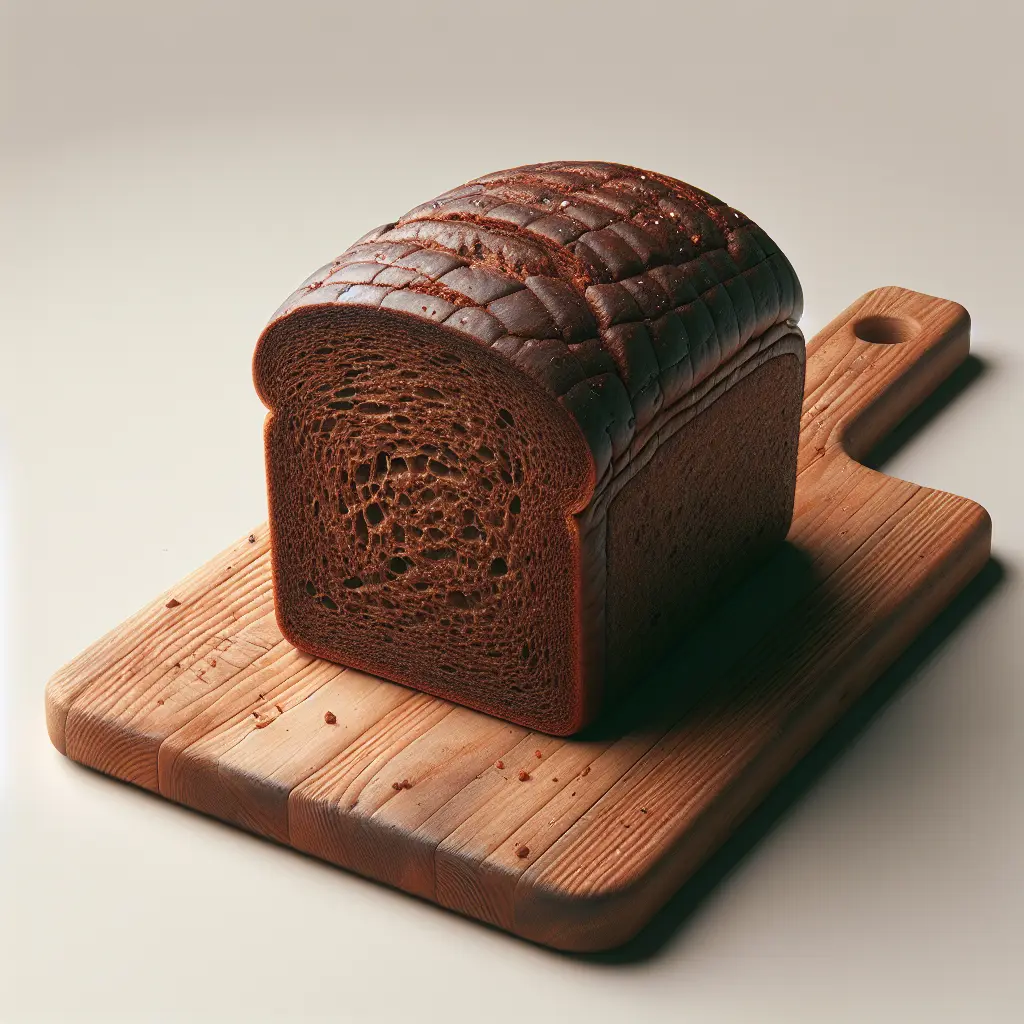Pumpernickel: A Dark and Flavorful Bread
Pumpernickel is a centuries-old bread that originated in Germany. Its name is derived from the German words "pumpern," meaning "to fart," and "nickel," a mischievous sprite from German folklore. This humorous etymology is believed to refer to the bread's strong and slightly sour flavor.
Nutritional Value of Pumpernickel
Pumpernickel is a nutrient-rich bread that offers a range of health benefits. Here's a breakdown of its nutritional value per slice (80 calories):
- Calories: 80
- Protein: 2.8g
- Fat: 1g
- Carbohydrates: 15g
- Fiber: 2.1g
- Sugar: 0.2g
Pumpernickel is a good source of dietary fiber, which is important for digestive health, satiety, and blood sugar control. It also contains significant amounts of protein and carbohydrates, making it a well-balanced food.
Pumpernickel is particularly rich in B vitamins, including niacin, thiamine, and riboflavin. These vitamins are essential for energy metabolism, nerve function, and skin health. Additionally, pumpernickel contains iron, magnesium, and phosphorus, which are important minerals for blood health, muscle function, and bone health.
Benefits of Eating Pumpernickel
Consuming pumpernickel bread offers several health benefits. Here are some of the key advantages:
- Improved Digestion: The high fiber content of pumpernickel helps promote regularity and supports a healthy digestive system. Fiber acts as a prebiotic, feeding the beneficial bacteria in the gut and improving overall gut health.
- Reduced Risk of Heart Disease: Pumpernickel contains soluble fiber, which can bind to cholesterol in the digestive tract and prevent its absorption into the bloodstream. This helps lower LDL (bad) cholesterol levels, reducing the risk of heart disease.
- Stabilized Blood Sugar Levels: The fiber in pumpernickel also helps slow down the absorption of sugar into the bloodstream, preventing spikes in blood sugar levels. This makes pumpernickel a good choice for people with diabetes or prediabetes.
- Increased Satiety: The fiber and complex carbohydrates in pumpernickel promote a feeling of fullness, helping you stay satisfied for longer periods of time. This can aid in weight management and reduce cravings.
How to Enjoy Pumpernickel
Pumpernickel's unique flavor and texture make it a versatile bread that can be enjoyed in various ways. Here are some suggestions:
- Sandwiches: Pumpernickel's hearty texture makes it an excellent choice for sandwiches. Its slightly sour flavor pairs well with a variety of fillings, such as smoked salmon, roast beef, or grilled vegetables.
- Toast: Toasting pumpernickel slices brings out its nutty flavor and makes it a crispy and satisfying breakfast or snack. Top it with butter, jam, or avocado for a simple yet delicious treat.
- Croutons: Cut pumpernickel into cubes and toast them to make flavorful croutons for salads or soups.
- Breadcrumbs: Grind pumpernickel bread into crumbs to use as a coating for baked dishes or as a thickener for sauces.
Conclusion
Pumpernickel is a flavorful and nutritious bread that offers a range of health benefits. Its high fiber content, abundance of B vitamins, and other essential nutrients make it a valuable addition to a balanced diet. Whether enjoyed as a sandwich, toast, or in other forms, pumpernickel is a versatile and satisfying bread choice.
How many calories are in Pumpernickel?
Each 1 slice of Pumpernickel contains 80 calories.
Pumpernickel Nutritional Information
| Nutrient | Amount per 1 slice (32g) |
|---|---|
| Calories | 80 Calories |
| Protein | 2.8g |
| Fat | 1g |
| Saturated Fat | 0.1g |
| Cholesterol | 0mg |
| Carbohydrates | 15g |
| Dietary Fiber | 2.1g |
| Sugar | 0.2g |
| Sodium | 0.191mg |
| Potassium | 0.0666mg |
| Calcium | 0.022mg |
| Iron | 0.0009mg |
